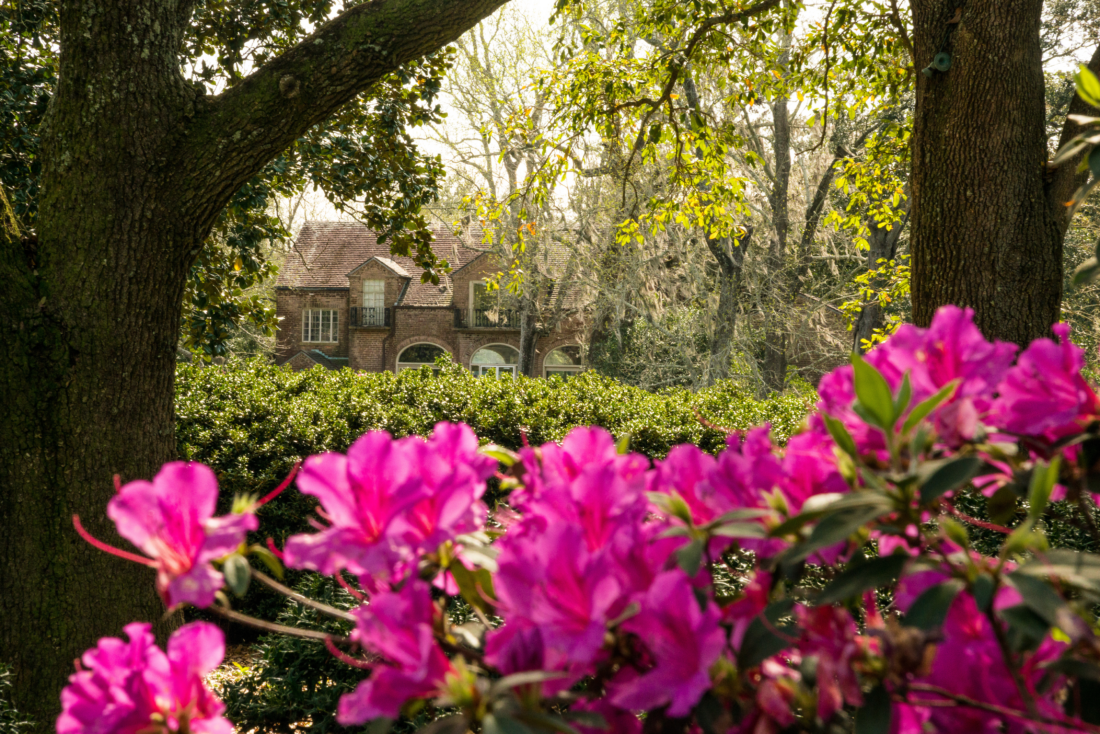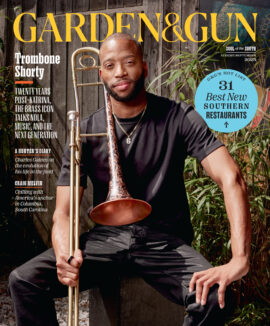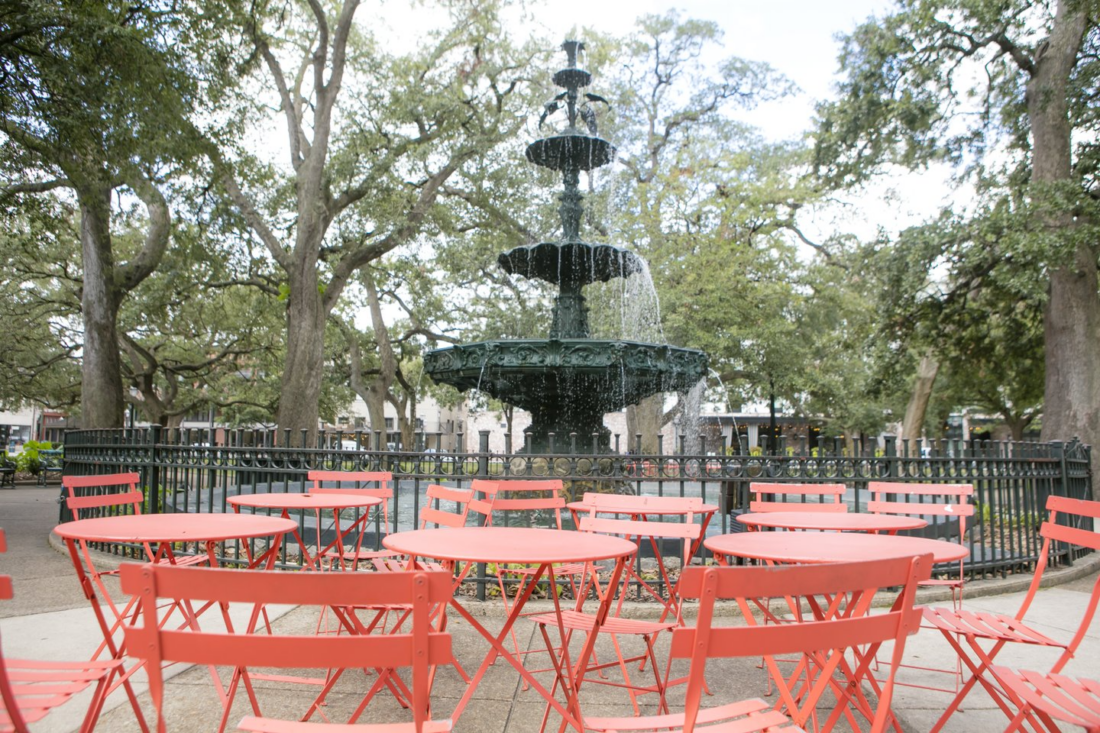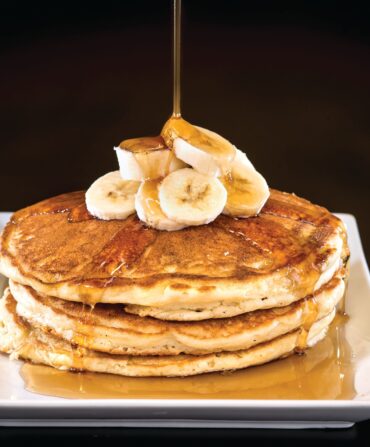Even in the height of summer, shimmering plastic beads in shades of gold, purple, and green dangle from power lines and lampposts in Mobile, Alabama. The bacchanal may have ended months ago, but in the birthplace of Mardi Gras in the U.S., carnival isn’t just a season; it’s a lifestyle, one that lives year-round in the famous New Year’s Eve Moon Pie Drop and in public art throughout town. But there are more reasons to celebrate the city: a Top Chef–helmed restaurant, its first food hall, a new museum, and a forthcoming boutique hotel, to name a few. Here’s how to experience Mobile’s latest renaissance.
WHY WE LOVE IT
Mobile’s historic downtown was once filled with empty buildings. Now, lush squares dotted with fountains offer respite from the ongoing restoration of time-honored landmarks. The coastal-inspired farm-to-table restaurant, Noble South, for example, occupies the Scheuermann Building, designed in 1893 by architect Rudolph Benz and noted for towering ceilings, stained glass windows, and exposed brick. Wintzell’s Oyster House just down Dauphin Street is in the same spot where, in 1901, Dr. H. Roger Williams opened one of the first Black drugstores, Live and Let Live. Sprinkle in sweeping views of the majestic Mobile Bay from various angles around town, and you’re left with a far-from-boring burgh.
NEIGHBORHOODS TO KNOW
Seven districts comprise Mobile’s downtown and midtown neighborhoods: Church Street, Lower Dauphin (LODA), Oakleigh Garden District, Old Dauphin Way, Leinkauf, Ashland Place, and De Tonti Square. Each area has its own architectural accents and personality, and most are designated by the streets marking their borders. Lower Dauphin encompasses Mobile’s unofficial restaurant row. Here, discerning patrons fill favorites such as Mo’Bay Beignet, Squid Ink, and NoJa while gallery hoppers dip in and out of Sophiella, Alabama Contemporary Art Center, and Mobile Arts Council. Oakleigh Garden District holds some of the city’s most beautiful nineteenth-century homes, while De Tonti Square is a nine-block district exemplifying Greek Revival and Federal-style architecture. There’s also the up-and-coming St. Louis Street and its surrounding blocks, where former industrial spaces have morphed into neighborhood haunts like Olde Mobile Antiques Gallery, the Cheese Cottage, Dropout Bakery, and Nova Espresso. Beyond downtown and midtown, there’s Spring Hill with its eponymous college, a circa-1930 golf course with rolling greens, and decades-old destination boutiques like the Holiday.
WHAT TO DO
Explore the Clotilda
Mobile recently unveiled Clotilda: The Exhibition, a museum situated in one of the country’s only surviving communities founded by West Africans, Africatown. It tells the story of the survivors of the last illegal slave ship to enter America and their descendents, who founded the community along the banks of Mobile Bay. Visitors are invited on an interactive tour in which all senses are tapped, whether through the sounds of a creaking ship hull or the sight of pieces of the Clotilda. For a deeper dive into Mobile’s Black history, the Dora Franklin Finley African American Heritage Trail stops at other integral cultural sites, including the Rosenwald-designated Mobile County Training School, the Royal Street slave market marker, and the Creole Fire Station, which was considered a social epicenter in its heyday.

Slurp oysters
Gulf Coast bivalves are a briny delicacy, and those lifted from Mobile Bay and the Gulf of Mexico are some of the most precious. See where they’re grown before sampling them at Murder Point in Bayou La Batre. Here, oysterman Lane Zirlott nurtures 11 million oysters into production annually. At the Bluegill, which welcomes guests by car and by boat, the signature dish is flaming oysters grilled and doused in butter, cheese, and herbs. The Original Oyster House is known for its fried varieties—served atop a salad, on a platter, or sandwiched between French bread with all the fixings.
Salute a soldier
The USS Alabama Battleship Memorial Park has been a proud showpiece of Mobile since 1965. Here, hundreds of thousands of annual visitors come to tour the 45,000-ton WWII ship that led the American fleet into Tokyo Bay on September 5, 1945. After being decommissioned just a few years later, the ship was forever anchored in Mobile Bay. Beyond the vessel itself, you can also view USS Drum, the oldest American submarine on public display; the Medal of Honor Aircraft Pavilion; tanks and artillery; and several memorials.
WHEN TO GO
Spring
March ushers in the Azalea Bloom Out at Bellingrath Gardens. The sixty-five-acre estate usually reaches peak color in early spring, and there are thousands of flowers to see along two miles of self-guided pathways. The South Sound Music Festival brings artists from around the Southeast to three stages downtown. The biggest party besides Mardi Gras is on St. Patrick’s Day at Callaghan’s Irish Social Club, outside of which thousands fill the streets.

Summer
While there’s no escaping the humidity of the Deep South, there is ample opportunity to cool off: Pick up a scoop of Cammie’s Old Dutch Ice Cream Shoppe, stroll the air-conditioned halls of the History Museum of Mobile or the Mobile Carnival Museum, or tour the vast Mobile-Tensaw Delta on an airboat or sailboat. Across the bay in Gulf Shores, thirty-two miles of white-sand beaches await.

Fall
During the one-day Dauphin Street Beer Festival, more than a dozen venues around Mobile serve popular brews from around the world. Friday night lights are always on at Ladd-Peebles Stadium, where Mobile County high schools go head to head weekly.
Winter
Mardi Gras means thousands descend on Mobile for carnival season. Between Epiphany and Ash Wednesday, over forty parades—featuring soulful bands marching in sync and masked riders tossing trinkets—take over the streets. Score a ticket to one of the exclusive balls from a Mystic Society member.
WHERE TO STAY
At Fort Condé Inn, guests are immersed in the historic village of the same name, which contains some of the city’s grandest homes along with gas lanterns, brick streets, and plenty of haint-blue ceilings. (Its namesake 1793 fort is within walking distance.) The Battle House Hotel in downtown is the peak of luxury, boasting crystal chandeliers, Tuscan columns, and a beaux arts–style lobby rotunda. Reimagined with a chic contemporary vibe, the Admiral—best known as one of Jimmy Buffett’s original performance venues—is set to reopen in 2024 after receiving the royal treatment from Avocet Hospitality, the brand behind the Vendue in Charleston and the Reed House in Chattanooga.








